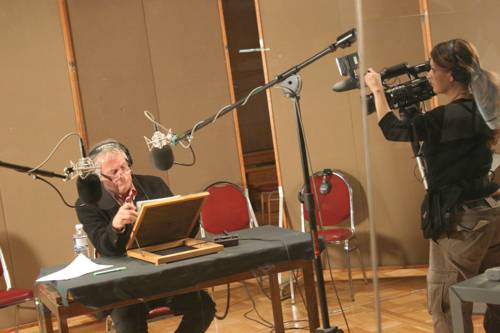
FAQ About The Role of Animation Voice Acting in Global Entertainment

What is animation voice acting?
Animation voice acting involves providing voices for animated characters in films, television shows, video games, dubbing, and more. Voice actors use their vocal prowess to bring characters to life, conveying emotions, personality, and nuances that align with the animated visuals.

How has animation voice acting evolved over the years?
Animation voice acting has substantially evolved from its early days of straightforward dialogue delivery to more intricate performances that require a deep understanding of character development and emotional depth. The industry's growth has paralleled the technological advancements in animation, demanding higher quality and more dynamic voice performances.

What impact does voice acting have on storytelling in animation?
Voice acting is crucial in storytelling as it adds a layer of emotional depth and connection, making characters more relatable and stories more engaging. It can influence the tone, mood, and overall impact of an animated production, significantly shaping how audiences perceive and connect with the narrative.

Who are some famous animation voice actors?
Several voice actors have gained fame for their work in animation, such as Mel Blanc, known as 'The Man of a Thousand Voices,' who shaped numerous Looney Tunes characters; Tom Kenny, the voice of SpongeBob SquarePants; and Tara Strong, known for her roles in "The Fairly OddParents" and "Teen Titans."

Why is voice acting important in global entertainment?
Voice acting plays a pivotal role in global entertainment by transcending language barriers and cultural differences. It enables animated stories and characters to resonate with audiences worldwide, offering a shared narrative experience that promotes cultural exchange and understanding.

How do voice actors prepare for their roles?
Voice actors prepare by thoroughly understanding their character's background, personality, and motivations. They often research the context of the story, practice vocal exercises, and collaborate with directors to achieve the desired vocal performance that aligns with the animation's vision.

How has technology influenced animation voice acting?
Technological advancements have significantly influenced animation voice acting by improving sound quality, editing, and mixing processes. Innovations such as digital recording, real-time voice modulation, and motion capture have expanded creative possibilities and enhanced the overall quality of voice performances.

What challenges do animation voice actors face?
Voice actors face challenges such as sustaining vocal health, creating unique and memorable character voices, and conveying complex emotions purely through voice. They must adapt to the fast-paced production schedules and often work in isolation without interacting with other actors on set.

How do cultural differences affect voice acting in animation?
Cultural differences can impact voice acting by requiring adaptations in dialogue, intonation, and character portrayal to suit different audiences. Voice actors may need to employ cultural sensitivity and understanding in international adaptations to maintain authenticity while appealing to diverse viewers.

What qualities make a good animation voice actor?
A good animation voice actor possesses strong vocal versatility, the ability to convey emotions convincingly, adaptability, creativity, and a deep understanding of character dynamics. They must be equipped to handle diverse roles and vocal demands, often requiring improvisation and quick learning.

Are there awards for animation voice acting?
Yes, there are several awards recognizing excellence in animation voice acting. The Annie Awards, the Society of Voice Arts and Sciences (SOVAS) awards, and the Emmy Awards all have categories dedicated to outstanding voice performances in animation.

How do voice actors create different character voices?
Voice actors create different character voices by manipulating their pitch, tone, accent, and rhythm. They explore various vocal techniques and draw from personal experiences and observations to craft distinct and memorable voices that fit the characters they portray.

What is the role of a voice director in animation?
A voice director oversees the voice recording process in animation, guiding actors to deliver performances that align with the story's vision. They provide feedback, manage casting, and ensure consistency in character portrayals throughout the production, enhancing the overall quality of the animated work.

How can aspiring voice actors get into the animation industry?
Aspiring voice actors can start by developing a diverse voice portfolio, attending acting and voice workshops, and creating a professional demo reel. Networking within the industry, auditioning for roles, and seeking guidance from experienced professionals can also help them gain entry into animation voice acting.

Why do some animated films feature celebrity voice actors?
Animated films often feature celebrity voice actors to leverage their star power, attract a wider audience, and enhance marketing potential. Celebrity voices can add unique flair to characters and appeal to fans, though the effectiveness depends on how well their voices suit the roles they portray.

How is voice acting for video games different from animation?
Voice acting for video games often requires more interactive and dynamic performances due to the non-linear and player-driven nature of gaming. Actors may record multiple responses for varying scenarios, focusing on conveying immediate emotional impact and adaptability to enhance the player's immersive experience.

What role do dubbing and localization play in animation voice acting?
Dubbing and localization involve adapting an animated work for a different audience by translating the dialogue and re-recording voices. Effective dubbing maintains the story’s integrity while ensuring cultural relevance, allowing global audiences to enjoy content in their preferred language without losing its original essence.

How has globalization influenced animation voice acting?
Globalization has expanded the reach of animated content, increasing demand for multilingual adaptations and culturally diverse productions. Voice actors often partake in cross-cultural projects, enhancing global storytelling and helping the industry meet international audiences' varied needs and expectations.

What training is beneficial for animation voice actors?
Voice actors benefit from training in traditional acting, vocal techniques, dialects, and improvisation. Participating in workshops or courses can help develop their vocal range, versatility, and understanding of character development, all essential skills for successful animation voice acting.

Why is emotional expression crucial in animation voice acting?
Emotional expression is crucial in animation voice acting because it brings authenticity and relatability to characters. It helps connect audiences to the narrative and enhances the storytelling experience by vividly portraying characters' feelings and journeys through voice alone.
